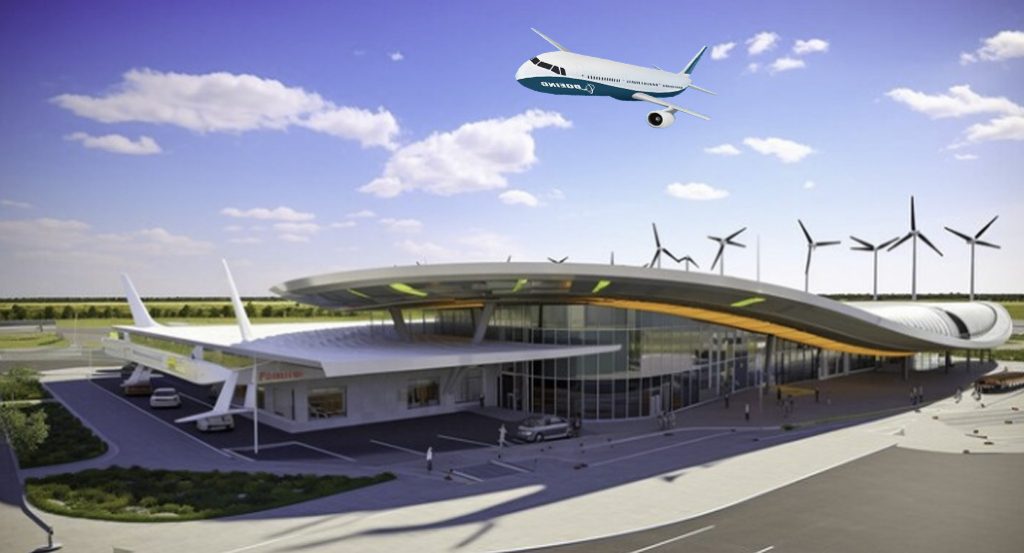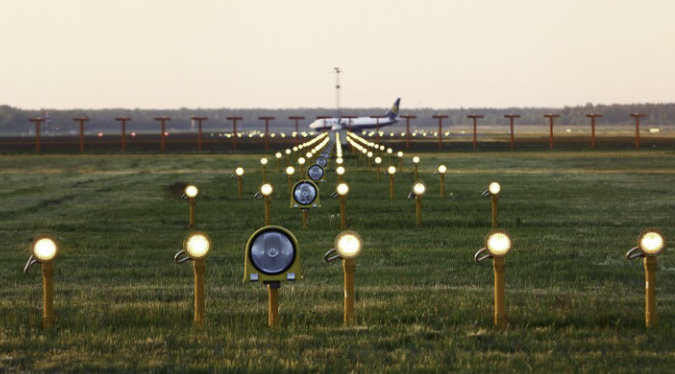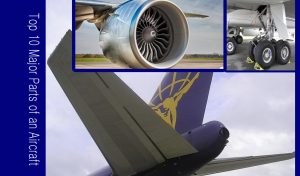Airfield sustainability initiatives in aviation are becoming increasingly important as the aviation industry seeks to reduce its environmental footprint and contribute to global efforts to combat climate change. Going green in aviation involves implementing various strategies and technologies to minimize the environmental impact of airfield operations. Here are some key initiatives and practices where Airfield Sustainability Initiatives Going Green in Aviation can be successful.

1-Renewable Energy Sources:
Promoting the use of renewable energy sources in aviation is a key strategy for making the aviation industry more environmentally friendly and sustainable. The aviation industry is a significant contributor to greenhouse gas emissions, and transitioning to renewable energy sources can help reduce its carbon footprint. Here are several strategies and initiatives to encourage the adoption of renewable energy sources in aviation to go green:
- Solar Power for Ground Operations:
- Install solar panels on airport buildings, hangars, and parking structures to generate clean electricity for ground operations, including lighting, HVAC systems, and electric ground support equipment (GSE).
- Implement solar-powered charging stations for electric vehicles on airport premises.
- Wind Energy Generation:
- Explore the feasibility of wind turbines at airports to harness wind energy for on-site power generation.
- Consider offshore wind farms near coastal airports to provide renewable energy.
- Hydroelectric Power:
- Evaluate the potential for hydropower generation using nearby water sources or water treatment facilities to supply electricity to airport facilities.
- Invest in small-scale hydropower projects where appropriate.
- Biomass Energy:
- Use biomass energy sources, such as agricultural or forestry residues, to generate bioenergy for airport heating or cooling systems.
- Collaborate with local biomass suppliers to secure a sustainable and reliable fuel source.
- Geothermal Heating and Cooling:
- Implement geothermal heating and cooling systems in airport buildings to reduce energy consumption and emissions.
- Utilize the stable temperature of the Earth’s subsurface for efficient HVAC operations.
- Offsite Renewable Energy Procurement:
- Enter power purchase agreements (PPAs) to source electricity from offsite renewable energy projects, such as wind farms or solar arrays.
- Work with utilities and renewable energy developers to secure renewable energy supply contracts.
- Electric Ground Support Equipment (GSE):
- Transition to electric GSE powered by renewable energy sources to reduce emissions and noise pollution on the airfield.
- Invest in charging infrastructure for electric GSE.
- Green Building Certification:
- Seek green building certifications, such as LEED (Leadership in Energy and Environmental Design), for airport facilities that incorporate renewable energy systems and sustainable design.
- Hydrogen Fuel Production:
- Consider producing hydrogen from renewable sources, such as electrolysis powered by wind or solar energy, to support hydrogen fuel cell applications in aviation, including ground support equipment.
- Biofuels for Aircraft:
- Promote the development and use of sustainable aviation biofuels derived from renewable feedstocks, such as algae, plant-based oils, and waste materials.
- Collaborate with airlines to increase the availability of biofuels at airports.
- Regulatory and Policy Support:
- Advocate for supportive policies and regulations that encourage the adoption of renewable energy in aviation, including incentives, renewable energy targets, and emissions reduction goals.
- Education and Awareness:
- Raise awareness among airport stakeholders, including airlines and passengers, about the benefits of renewable energy adoption and sustainability efforts.
- Investment in Research and Development:
- Invest in research and development initiatives to advance renewable energy technologies in aviation and address specific challenges in the industry.

2-Sustainable Ground Transportation:
Sustainable ground transportation in aviation, often referred to as “ground access,” plays a crucial role in making the aviation industry more environmentally friendly and sustainable. Ground transportation encompasses the movement of passengers and cargo to and from airports, as well as on-airport activities such as baggage handling and maintenance. Here are several strategies and initiatives to promote sustainable ground transportation in aviation to go green:
- Public Transportation Integration:
- Collaborate with local public transportation authorities to improve connectivity between airports and urban centers, making it easier for passengers and employees to access airports by bus, tram, subway, or commuter rail.
- Develop dedicated airport express routes and shuttle services to reduce the reliance on private vehicles.
- Electric Ground Support Equipment (GSE):
- Replace conventional gasoline and diesel-powered GSE, such as baggage tractors and shuttle buses, with electric or hybrid-electric alternatives to reduce emissions and noise pollution.
- Invest in charging infrastructure and maintenance facilities for electric GSE.
- Alternative Fuels for Ground Vehicles:
- Transition airport ground vehicles, including fuel trucks, maintenance vehicles, and shuttles, to run on alternative fuels such as compressed natural gas (CNG), biofuels, or hydrogen.
- Collaborate with local fuel suppliers to provide alternative fuel options on airport premises.
- Hydrogen Fuel Cell Vehicles:
- Explore the use of hydrogen fuel cell vehicles for ground transportation on airport properties, including cargo handling and employee shuttles.
- Invest in hydrogen refueling infrastructure where feasible.
- Bicycle and Pedestrian Infrastructure:
- Create and maintain bike lanes, pedestrian pathways, and safe crosswalks to encourage employees and passengers to walk or bike to and from the airport.
- Provide secure bike storage facilities and promote bicycle-sharing programs.
- Carpooling and Ridesharing:
- Encourage employees to carpool or rideshare by offering preferential parking, incentives, or dedicated pickup and drop-off areas for carpoolers.
- Partner with ridesharing companies to promote shared rides to and from the airport.
- Telecommuting and Flexible Work Arrangements:
- Support telecommuting and flexible work arrangements for airport employees to reduce the number of daily commuters.
- Develop policies that allow employees to work remotely when feasible.
- Green Vehicle Incentives:
- Offer incentives to airport employees and ground transportation service providers to adopt low-emission and fuel-efficient vehicles.
- Provide discounts on airport access fees for green vehicles.
- Smart Parking Management:
- Implement intelligent parking management systems that guide drivers to available parking spaces, reducing congestion and emissions from circling vehicles.
- Introduce dynamic pricing to encourage the use of public transportation and carpooling.
- Monitoring and Reporting:
- Monitor and report on greenhouse gas emissions and sustainability initiatives related to ground transportation, and set emissions reduction targets.
- Share data with the public and stakeholders to demonstrate progress.
- Regulatory Compliance and Certification:
- Ensure compliance with environmental regulations and standards related to ground transportation.
- Pursue airport sustainability certifications, such as the Airport Carbon Accreditation program, which includes ground access as a criterion.
- Collaboration and Partnerships:
- Collaborate with airlines, local governments, transportation providers, and other stakeholders to develop and implement sustainable ground access strategies.
- Participate in regional sustainability initiatives and working groups.
3-Alternative Fuels:
Promoting the use of alternative fuels in aviation is a key strategy for making the industry more environmentally sustainable and reducing its carbon footprint. Traditional aviation fuels, such as jet fuel, are a significant source of greenhouse gas emissions. Here are several strategies and initiatives to encourage the adoption of alternative fuels in aviation to go green:
- Biofuels:
- Invest in the research and development of sustainable aviation biofuels, which can be produced from feedstocks such as algae, biomass, and waste materials.
- Collaborate with biofuel producers to increase production and lower costs, making biofuels more accessible to airlines.
- Synthetic Fuels:
- Develop and promote synthetic fuels, also known as e-fuels or power-to-liquid (PtL) fuels, which can be produced by converting renewable electricity and carbon dioxide into liquid fuels.
- Invest in pilot projects and scaling up production facilities for synthetic fuels.
- Hydrogen:
- Explore the potential use of hydrogen as an aviation fuel, particularly for hydrogen fuel cell-powered aircraft or as a feedstock for synthetic jet fuels.
- Invest in research and development to address the challenges associated with hydrogen storage, distribution, and infrastructure.
- Electric Propulsion:
- Investigate electric and hybrid-electric propulsion systems for smaller aircraft, which can reduce emissions and noise pollution.
- Support the development of electric propulsion technologies and infrastructure for aviation.
- Partnerships and Collaborations:
- Collaborate with alternative fuel producers, research institutions, and government agencies to accelerate the development and adoption of sustainable aviation fuels.
- Form partnerships with airlines and aircraft manufacturers to promote the use of alternative fuels.
- Regulatory Support:
- Advocate for supportive policies and regulations that encourage the use of alternative fuels, including incentives, mandates, and emissions reduction targets.
- Work with aviation authorities and international organizations to establish sustainability criteria for alternative fuels.
- Commercialization and Scaling:
- Invest in the commercialization and scaling up of alternative fuel production facilities to make them economically viable and competitive with traditional jet fuel.
- Encourage investment from private sector entities to expand production capacity.
- Awareness and Education:
- Raise awareness among passengers, airlines, and industry stakeholders about the environmental benefits of alternative aviation fuels.
- Provide information on the availability and use of alternative fuels.
- Fuel Blending:
- Promote the blending of sustainable aviation fuels with traditional jet fuel to reduce emissions gradually while maintaining engine performance and safety.
- Testing and Certification:
- Work with aviation authorities to establish testing and certification standards for alternative aviation fuels to ensure safety and performance.
- Incentives and Subsidies:
- Provide financial incentives, subsidies, or tax credits to airlines and fuel producers to offset the higher costs associated with alternative fuels.
- Reporting and Transparency:
- Encourage airlines and fuel suppliers to report on the use and environmental benefits of alternative aviation fuels as part of their sustainability reporting.
4-Energy-Efficient Lighting:
Implementing energy-efficient lighting in aviation is a critical aspect of making the industry more environmentally friendly and sustainable. Energy-efficient lighting not only reduces electricity consumption but also contributes to reduced greenhouse gas emissions and operating costs. Here are several strategies and initiatives to promote energy-efficient lighting in aviation and go green:

- LED Lighting Conversion:
- Replace traditional incandescent and fluorescent lighting systems with energy-efficient LED lighting throughout airport facilities, including terminals, runways, and maintenance areas.
- LEDs are more energy-efficient, have a longer lifespan, and provide better-quality lighting.
- Smart Lighting Controls:
- Install lighting control systems that utilize occupancy sensors, daylight harvesting, and time scheduling to optimize lighting levels based on occupancy and natural light availability.
- Integrate lighting controls with building management systems for centralized monitoring and control.
- Daylighting:
- Design airport terminals with ample natural lighting through well-placed windows, skylights, and clerestory windows to reduce the need for artificial lighting during daylight hours.
- Use light-shelves and light-redirecting devices to distribute natural light more effectively.
- Efficient Exterior Lighting:
- Use energy-efficient lighting for airport perimeter fencing, parking lots, and airfield lighting.
- Consider replacing traditional runway and taxiway lights with LED fixtures, which provide brighter illumination while consuming less energy.
- Lighting Retrofit Programs:
- Implement lighting retrofit programs to upgrade existing lighting systems in phases, focusing on high-energy-consumption areas first.
- Establish goals and timelines for completing lighting retrofits across the airport.
- Energy Performance Contracts:
- Explore energy performance contracts with energy service companies (ESCOs) that specialize in energy-efficient lighting upgrades.
- ESCOs can design, finance, and implement lighting projects, with savings used to repay project costs.
- Efficient Terminal Design:
- Consider energy-efficient lighting designs and technologies when constructing or renovating airport terminals.
- Utilize energy modeling and simulations to optimize lighting design for energy savings.
- Energy-Efficient Airfield Lighting Controls:
- Upgrade airfield lighting control systems to include advanced technologies like energy-efficient LED fixtures and precision controls.
- Implement automated dimming and zoning for airfield lighting to reduce energy use during periods of low activity.
- Education and Awareness:
- Train airport staff and contractors on energy-efficient lighting practices and the benefits of sustainability.
- Raise awareness among airport stakeholders, including airlines and tenants, about the importance of energy-efficient lighting.
- Measurement and Verification:
- Monitor and measure energy consumption and lighting performance regularly to ensure that energy-efficient lighting systems are operating optimally.
- Use data to identify opportunities for further energy savings.
- Regulatory Compliance:
- Stay informed about and comply with energy efficiency regulations and standards applicable to airport lighting.
- Green Airport Certification:
- Pursue green airport certification programs, such as the Airport Carbon Accreditation program, which includes energy efficiency as one of its criteria.
5-Noise Reduction:
Reducing noise pollution in aviation is a crucial component of making the industry more environmentally friendly and sustainable. Aircraft noise can have adverse effects on communities surrounding airports, including health impacts and decreased quality of life. Here are several strategies and initiatives that can help aviation go green through noise reduction measures:
- Modern Aircraft Technology:
- Invest in quieter aircraft technology, including the development and use of quieter engines and noise-reducing components.
- Retrofit older aircraft with noise-reducing modifications and technologies.
- Flight Procedures:
- Implement noise abatement flight procedures, such as steeper ascent and descent profiles, to reduce noise emissions during takeoff and landing.
- Utilize continuous descent approaches (CDA) and continuous climb departures (CCD) to minimize noise.
- Curfews and Noise Restrictions:
- Establish airport curfews and noise restrictions during nighttime hours to limit noisy operations when people are most sensitive to noise.
- Flight Path Optimization:
- Use precision navigation and GPS-based technology to optimize flight paths and avoid densely populated areas.
- Develop and implement noise preferential routes to direct aircraft away from residential communities.
- Quieter Ground Operations:
- Encourage the use of electric or low-noise ground support equipment (GSE) to reduce noise pollution on the airfield.
- Implement ground operation procedures that minimize noise, such as reducing unnecessary engine idling.
- Noise Barriers and Insulation:
- Install noise barriers and sound insulation measures for nearby communities to mitigate the impact of aircraft noise.
- Promote the use of quiet building materials and construction practices for residential and commercial properties near airports.
- Community Outreach and Education:
- Engage with local communities to raise awareness about aircraft noise and mitigation efforts.
- Share information about flight paths, noise abatement programs, and aircraft noise levels with residents.
- Green Airport Design:
- Incorporate noise reduction measures into airport design, such as sound-absorbing materials in terminals and noise-reducing ground markings.
- Plan airport expansion and development with noise considerations in mind.
- Operational Efficiency:
- Optimize air traffic management and air traffic control procedures to reduce the time aircraft spend in holding patterns, which can generate additional noise.
- Technology Investments:
- Invest in advanced air traffic management systems and technologies that can optimize flight routes and reduce congestion, leading to more efficient and quieter operations.
- Regulatory Measures:
- Enforce and enhance noise standards and regulations for aircraft manufacturers and operators.
- Encourage airlines to adopt quieter, more efficient fleets through incentives and regulations.
- Research and Development:
- Support research and development initiatives focused on noise reduction technologies and practices in aviation.
- Collaboration:
- Collaborate with industry stakeholders, including airlines, airports, regulatory agencies, and communities, to develop and implement noise reduction strategies.
- Incentives and Grants:
- Provide financial incentives or grants to airlines and airports that invest in noise reduction technologies and practices.
6-Sustainable Infrastructure:
Promoting sustainable infrastructure in the aviation sector is a critical step toward reducing the industry’s environmental impact and promoting a more eco-friendly future. Here are several strategies and initiatives that can help aviation go green through sustainable infrastructure development:
- Green Airport Design and Construction:
- Design and construct airports with sustainability in mind, incorporating energy-efficient buildings, renewable energy sources (e.g., solar panels), and eco-friendly materials.
- Use green building certifications such as LEED (Leadership in Energy and Environmental Design) to guide airport construction projects.
- Energy Efficiency:
- Implement energy-efficient technologies in airport operations, such as LED lighting, energy-efficient HVAC systems, and smart building management systems.
- Upgrade airport facilities to meet or exceed energy efficiency standards.
- Renewable Energy Integration:
- Install renewable energy systems at airports, such as wind turbines, solar farms, and geothermal heating and cooling, to generate clean energy on-site.
- Invest in power purchase agreements (PPAs) for renewable energy to reduce the carbon footprint of airport operations.
- Electric Ground Support Equipment (GSE):
- Transition to electric GSE, including baggage tugs, aircraft pushback vehicles, and maintenance equipment, to reduce emissions and noise pollution on the airfield.
- Sustainable Transportation Access:
- Enhance public transportation options to and from airports, including buses, trains, and electric shuttles, to reduce the number of private vehicles on the road.
- Provide infrastructure for electric vehicle charging stations and promote the use of electric taxis and ride-sharing services at airports.
- Water Management:
- Implement water-saving technologies, such as low-flow fixtures and rainwater harvesting systems, to reduce water consumption in airport facilities.
- Manage stormwater runoff to prevent pollution of local water bodies.
- Waste Management:
- Develop comprehensive waste management systems at airports, including recycling, composting, and waste-to-energy options.
- Encourage passengers and airport staff to participate in recycling and waste separation programs.
- Wildlife Management:
- Implement wildlife management programs to reduce bird strikes and other wildlife hazards around airports, using non-lethal and eco-friendly methods.
- Promote natural habitat conservation and restoration efforts on airport property.
- Noise Mitigation:
- Invest in noise-reducing technologies for aircraft, such as quieter engine designs and modified flight procedures.
- Develop noise abatement programs, including flight path optimization and land-use planning to minimize noise impact on nearby communities.
- Green Procurement Practices:
- Adopt sustainable procurement policies to source environmentally friendly materials and products for airport operations.
- Encourage vendors and suppliers to provide sustainable and eco-friendly options.
- Environmental Management Systems (EMS):
- Implement EMS standards like ISO 14001 to systematically manage and reduce environmental impacts at airports.
- Community Engagement and Education:
- Engage with local communities to foster understanding of aviation’s environmental impacts and involve them in sustainable infrastructure development efforts.
- Carbon Offsetting and Reduction Programs:
- Establish carbon offset programs or invest in carbon reduction initiatives to mitigate the greenhouse gas emissions associated with aviation activities.
- Data Tracking and Reporting:
- Monitor and report on sustainability performance regularly to track progress and demonstrate commitment to green infrastructure.
7-Waste Management:
Waste management in aviation, with a focus on sustainability and going green, is essential for reducing the environmental impact of the aviation industry. Here are several key strategies and initiatives that can be implemented to improve waste management in aviation while promoting environmental stewardship:
- Recycling Programs: Implement recycling programs at airports and within airlines to separate recyclable materials such as aluminum cans, plastic bottles, paper, and cardboard from other waste streams. These programs can help reduce the amount of waste sent to landfills.
- Waste Separation: Encourage passengers to separate their waste on flights by providing separate bins or containers for recyclables, organics (such as food waste), and non-recyclable waste. Cabin crew can play a role in educating passengers about waste separation.
- Composting: Implement composting programs for organic waste generated on flights, such as food scraps and napkins. Composting can reduce the environmental impact of waste disposal and create valuable compost for use in landscaping.
- Waste Audits: Conduct waste audits to better understand the composition of waste generated in aviation operations. This information can help identify opportunities for waste reduction and recycling.
- Reducing Single-Use Plastics: Minimize the use of single-use plastics in inflight services. Airlines can switch to reusable or compostable utensils, cups, and packaging materials.
- On-Ground Waste Management: Airports can establish comprehensive waste management systems that include recycling, composting, and waste-to-energy options. Proper waste sorting and collection infrastructure can make recycling and composting more feasible.
- Sustainable Catering: Collaborate with inflight catering companies to reduce food waste and implement sustainable food packaging and service practices.
- Circular Economy: Explore opportunities to adopt a circular economy approach by refurbishing and recycling aircraft components and materials, thereby reducing waste generation.
- E-Waste Management: Properly manage electronic waste (e-waste) generated by airlines and airports by ensuring the recycling or responsible disposal of electronic equipment.
- Partnerships and Certification: Partner with organizations like the Airports Council International (ACI) or the International Air Transport Association (IATA) to access resources and guidance on sustainable waste management. Airlines and airports can also seek certification or recognition for their sustainability efforts.
- Environmental Management Systems (EMS): Implement EMS standards such as ISO 14001 to establish a systematic approach to managing environmental impacts, including waste, in aviation operations.
- Regulatory Compliance: Ensure compliance with waste management regulations and standards set by aviation authorities and relevant environmental agencies.
- Educational Initiatives: Raise awareness among passengers, staff, and stakeholders about the importance of sustainable waste management in aviation. Provide educational materials and programs that promote responsible waste disposal.
- Monitoring and Reporting: Regularly monitor waste management practices and report on waste reduction and recycling achievements to track progress toward sustainability goals.

–Examples of specific airfields-
Here are some examples of specific airfield sustainability initiatives that are being implemented around the world:
- Denver International Airport in the United States has installed a solar farm that generates enough electricity to power the equivalent of 35,000 homes.
- London Heathrow Airport in the United Kingdom has committed to becoming net zero carbon by 2030. The airport is investing in renewable energy, energy efficiency, and sustainable vehicles and equipment.
- Amsterdam Schiphol Airport in the Netherlands has installed a noise barrier that reduces noise levels for surrounding communities.
- Changi Airport in Singapore has planted over 100,000 trees and shrubs on airport property to improve air quality and protect wildlife.
These are just a few examples of the many airfield sustainability initiatives that are being implemented around the world. As the aviation industry continues to focus on sustainability, we can expect to see even more innovative and impactful initiatives in the years to come.









